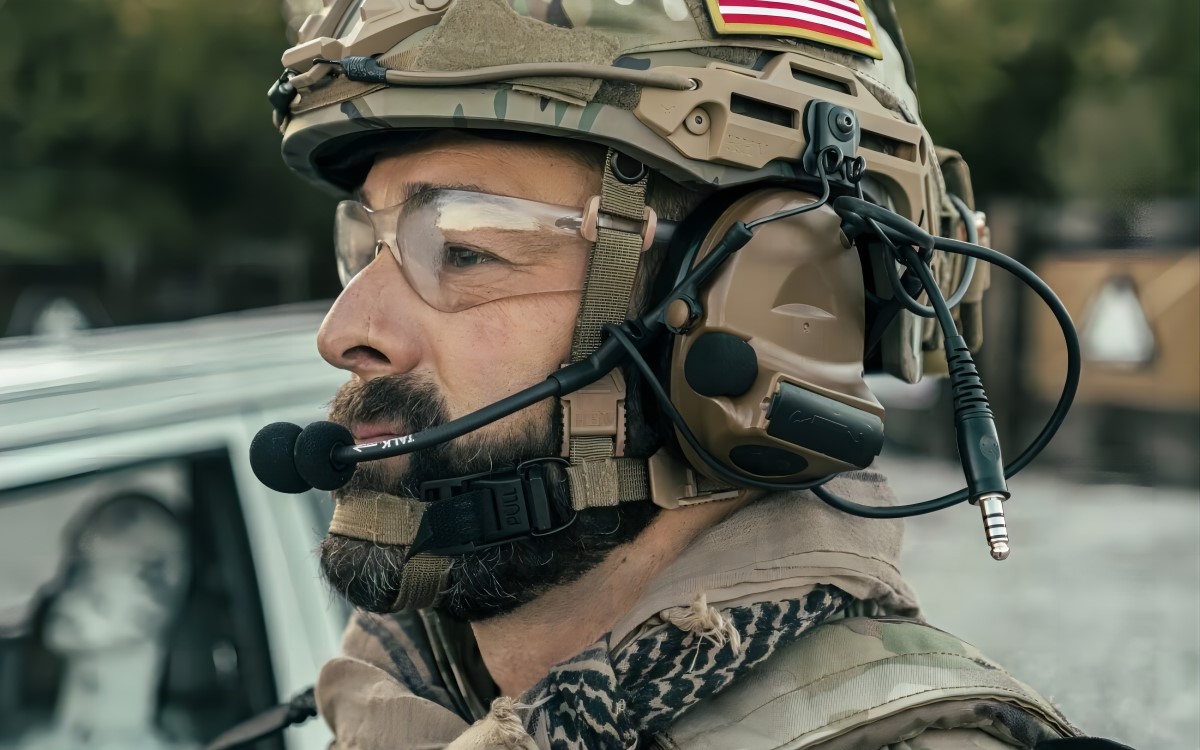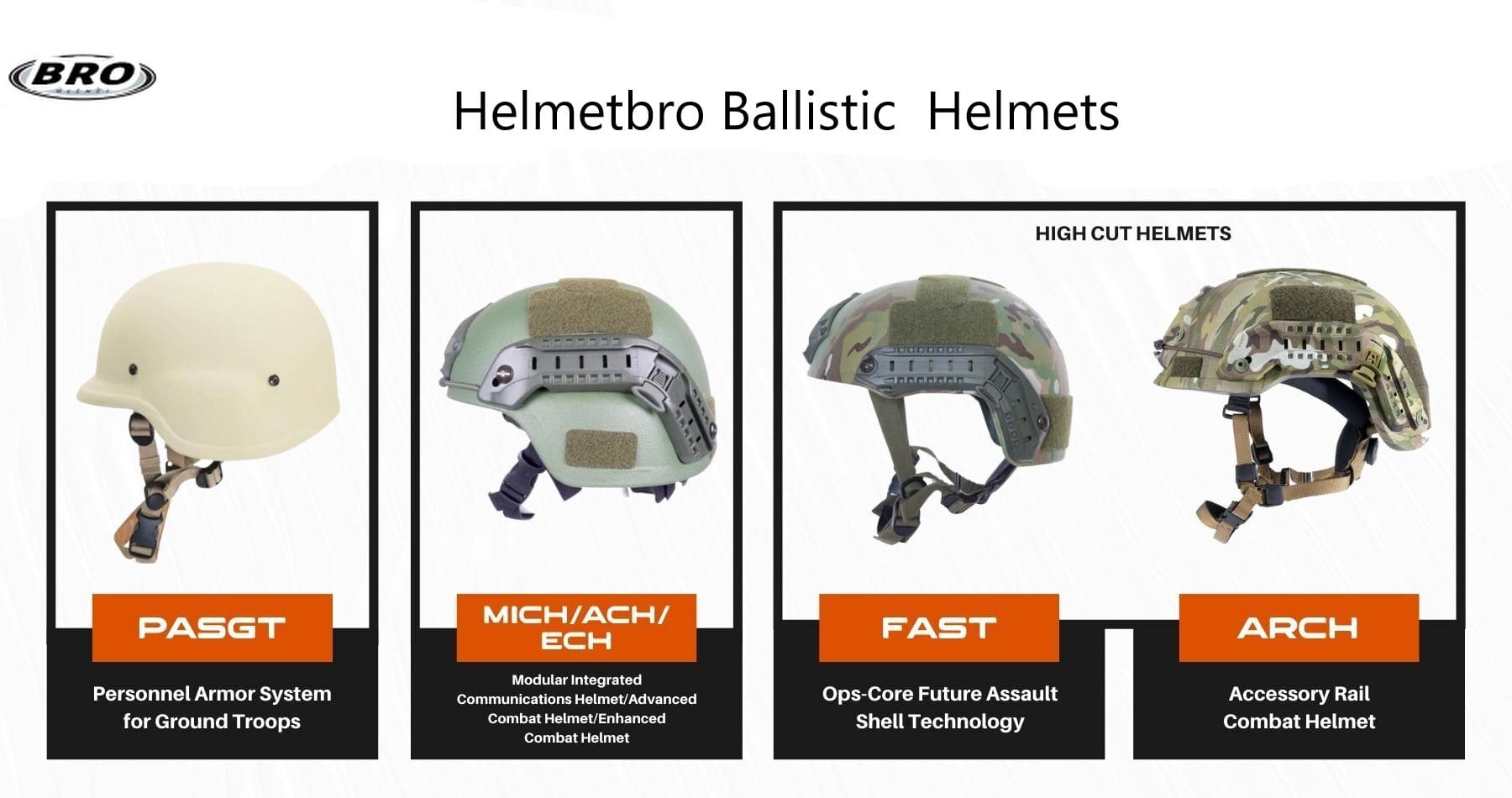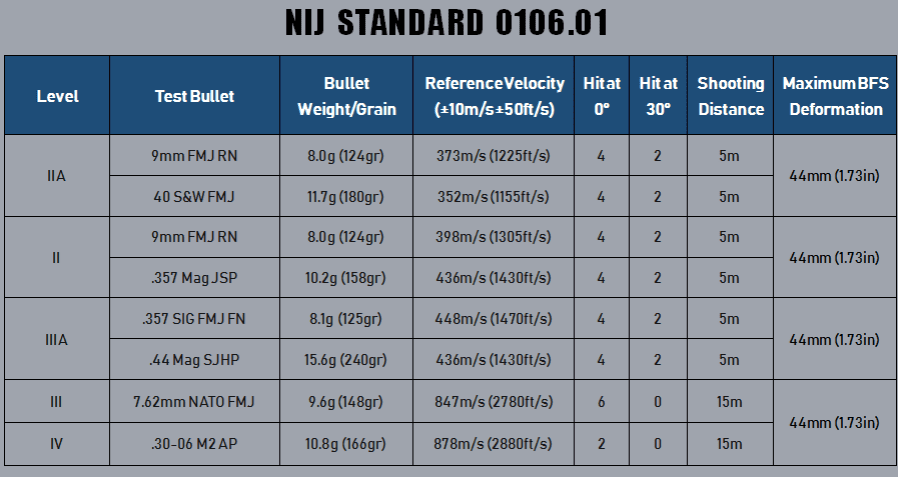Basic knowledge about ballistic helmets
Sep 23, 2020
Nowadays, ballistic helmets have become an indispensable member of some police agencies and military safety equipment. Its function is not limited to military aspects, any organization or even individual who needs security protection can also be equipped with ballistic helmets as needed. For example, special police, riot police, patrol personnel, even outdoor enthusiasts and high-risk industries can be equipped with ballistic helmets.
We seem to be in contact with ballisitc helmets a lot, but how much do you know about it?
Ⅰ. Basic knowledge about ballistic helmets
1. Definition
A ballistic helmet, or some people take it as "bulletproof helmet", is a tactical helmet designed to protect the wearer's head from threats such as ballistic impact (bullets), blunt impact, and blast debris.It is typically worn in conjunction with ballistic-resistant body armor to provide full coverage and protection.Traditionally, members of the military wear the ballistic helmet for combat, and it is also a common piece of gear for law enforcement in tactical situations, but even civilians just looking for extra ballistic protection when working with firearms can make good use of them.Many people have some misunderstandings about ballistic helmets, which are attributed to the general misunderstanding of the term "bulletproof". With so-called bulletproof helmets, they are generally considered impenetrable. Bulletproof helmet actually does not exist. With sufficient sustained firepower or the use of special ammunition, any type of armor is practically no longer bulletproof.
2. Material
Ballistic helmets are divided into three categories: metal, non-metal, metal and non-metal composite according to the material of the helmet shell. In addition to the old-fashioned steel helmets, the main materials for making bulletproof helmets are ultra-high molecular weight polyethylene fibers and aramid,pecial materials such as Kavlar, PE,Twaron® and Endumax® etc., some other materials include aramid,bulletproof steel. Aramid and PE are new high-tech synthetic fibers developed in 60s and 80s. New high-tech synthetic fibers have promoted their application in bulletproof industry. Aramid and PE helmets are much lighter, but they are more expensive than steel helmets under the same protection level. In addition, due to the characteristics of the material itself, there are special requirements for the preservation of aramid and PE helmets. For example, aramid helmets should be protected from sunlight and contact with water, while PE helmets should be kept away from hot objects because they are easily exposed to high temperatures influences.
3. Type and structure
Ballistic helmets can be divided into three main types:PASGThelmets, FAST helmets, MICH helmets and AF helmets. These helmets have some differences in structural and functional design. For example, FAST, MICH, and AF helmets are all designed with suspension attachments (modular memory foam pads make the helmet more comfortable to wear). In addition, there are rails on the helmet (except the basic MICH), and the wearer can carry night vision goggles, flashlights and other accessories as needed. Provide helmets of different sizes to suit customers of different sizes.

PASGT is the abbreviation of Personnel Armor System for Ground Troops. It usually has 19 independent bulletproof layers, which partially cover the wearer's ears in shape and design.
PASGT (Personnel Armor System for Ground Troops) Aramid fiber with a phenolic resin system. 3.1 lbs. to 4.2 lbs. (1420g to 1910g) Available in a range of colors and pattern for the U.S. Army, SWAT teams, Marine Corps MARPAT, UN Peacekeeping forces. Protects wearer from shrapnel and ballistic projectiles.
MICH is the abbreviation of The Modular Integrated Communications, its production material is usually Kevlar, with IIIA defense capabilities. The MICH helmet is specifically designed to withstand 9 mm and 44 MAG bullets and blunt weapon attacks. Provide more space for the wearer's ears and support the use of communication devices. The initial design included the brim and lower pinna. But then gradually took off the brim and earmuffs.
MICH (Modular Integrated Communications) Made of an advanced Kevlar material. 3.0 lbs. to 3.6 lbs. (1360g to 1630g) Available in camouflage patterns of Cyre MultiCAM, USMC MARPAT, U.S. Army UCP. Also available in complete black for SWAT terms. Protects wearer from handgun shots.
ECH (Enhanced Combat Helmet) Made of Ultra-High-Molecular-Weight polyethylene which is stronger than Kevlar. 3.2 lbs. to 3.5 lbs. (1474g to 1637g) Colors and patterns are same as PASGT and MICH. Provides enhanced protection from rifle rounds and fragmentation.
The FAST (The Ops-Core Future Assault Shell Technology) helmet is also known as the fast combat helmet. The height of the ear cut is the highest among the three helmet types. Usually, special forces will choose to wear this helmet.
Fast/High Cut/Maritime Cut/ATE Advanced Kevlar material. 2.2 lbs. to 3.0 lbs. (1143g to 1354g) Available in colors such as foliage green, urban tan, MultiCAM, black, desert MARPAT, etc. Designed for Maritime special operations.
Airframe Level/HIGH CUT ACH /BALLISTIC HELMET. Made of Ultra-High-Molecular-Weight polyethylene and Kevlar material. 2.4 lbs. to 4.0 lbs. (1163g to 1454g) Available in colors such as MultiCAM Designed for Maritime special operations.
Most companies today are using their patented padding and suspension systems to design the best ballistic helmets.
Today's ballistic helmets consist of a shell made of bulletproof materials (such as Kevlar), a fixing system including a chin strap, and a suspension system composed of shock-absorbing pads.
Some of the latest features of ballistic helmets include:
1. Modular Velcro accessories for end users.
2. Fill it correctly to fit the person's head perfectly.
3. Moisture-absorbing materials reduce the growth of bacteria.
4. Improve comfort and safety.
5. Fixation system-4-point chin strap and dial adjustment on the back of the helmet.
Ⅱ. NIJ Level Ballistic Helmets
1. What Do The NIJ Protection Levels Mean?
NIJ LEVELS - US NATIONAL INSTITUTE OF JUSTICE
NIJ Ballistic Levels Protection ( Level IIA, Level II, Level IIIA, Level III and Level IV)
Ballistic helmet is a critical safety piece of safety equipment that has saved the lives of thousands of people. However people who are in the market for helmets often find it difficult to assess which choice is right for them. There are a few primary factors to consider which solution will best suit their needs; threat level, heat buildup, comfort, mobility conceal-ability and cost. Threat level or protection level is typically the biggest factor when choosing ballistic helmets, and also the most difficult aspect to understand.
Limited by technology and materials, the highest level helmet that can be made is only NIJ IV. As we all know, the weight of a helmet is directly proportional to its protection level, that is, the higher the protection level, the heavier the helmet. Even with the advancement of material fibers, the ratings that every NIJ needs to wear a rifle-grade ballistic helmet will appear to be too bulky. Excessive weight will cause great obstacles to the wearer's exercise and cause a lot of discomfort. That’s why we can’t produce NIJ V helmets.
2.Anything else besides the ballistic helmets protection?
Of course, there are other reasons for wearing a bulletproof helmet besides blocking bullets. Ballistic helmets protect against impacts. For most soldiers and service members deployed overseas, this is not a serious problem. But it's very important to law enforcement and security personnel. Police and security forces are just as likely to encounter impacting weapons, projectiles, and other head impact hazards as they are to encounter gunshots, or more likely. Safety is paramount with having a ballistic helmet, which also provides impact protection.
Modern helmets have very advanced suspension systems that not only allow the helmet to be worn all day, but are also part of the impact protection kit, helping to minimize the force of contact with the head. Another common argument is that ballistic helmets impair peripheral vision, which can adversely affect the perception of ambient noise. It turns out that both ideas are outdated. A properly fitted helmet does not interfere with vision at all and allows for normal hearing. Many ballistic helmets are also designed for hearing protection, such as electronic ear muffs. These can actually improve safety by amplifying speech and other normal noise while canceling high-decibel noise, such as gunshots. It's hard to imagine a modern law enforcement or security agency not using or being allowed to wear ballistic helmets. It's like reducing the use of body armor. Ballistic helmets are well developed in business processes.
Helmetbro offers a comprehensive selection of helmets to suit every budget and need, getting the right setup for your mission is everything. Otherwise, you run the risk of not getting what you need, having too much, or worse.
Is this paper helpful to you? If you have any questions, please visit the official website of Helmetbro.com, or send an email to support@helmetbro.com, and you will definitely get a satisfactory reply.


